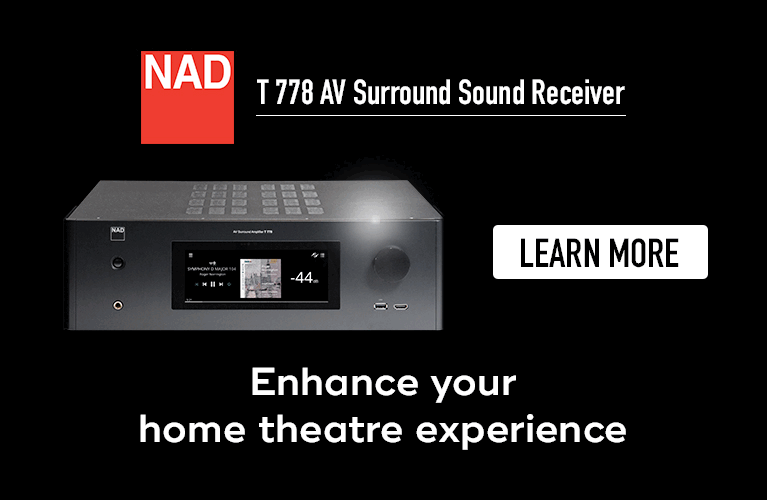When I started this column about three-and-a-half years ago, I envisioned it would be for products priced in the hundreds, not thousands, of dollars. But occasionally I’ve felt the need to stretch the budget, like the time I wrote about the Sonus Faber Lumina III loudspeaker and Rotel RA-1572MKII integrated amplifier-DAC, which are priced at $2100 per pair and $2099.99 respectively (all prices in USD). Granted, they’re not cheap, but they’re good value for money and I felt that thrifty audiophiles should know about them.
This month I again feel the need to stretch beyond my price constraints with the Focal On Wall 302 loudspeaker, which is priced at $1499 (or $2998/pair). The reason is simple—it’s a remarkably versatile transducer, and even when paired with an inexpensive and moderately poweredful amplifier, it can provide great sound quality for both movie-watching and two-channel listening. But to do this speaker justice, I also had to evaluate it away from the traditional two-channel setup I normally use for the products featured in this column, as you’ll see.
Description
Focal has two On Wall models in its 300 Series: the 302 and its little sibling, the 301, which is priced at $999 (or $1998/pair). Like most of the company’s speakers, they’re made in France.
The speakers are slim designs intended to be placed vertically on each side of a TV screen, or horizontally below or above it. The 301 and 302 are both about 6″ wide and 3.5″ deep, but the 302 is a hair over 49″ tall (or wide if you mount it sideways), while the 301 is 31.5″ tall (or wide). The cabinets are constructed from MDF and finished in White High Gloss or Black Satin. The latter is what I got. The angled ends of the On Walls add a little shape to what would otherwise be a straightforward rectilinear cabinet and house the two bass ports on each speaker—one firing mostly upward and the other mostly downward in the vertical orientation.
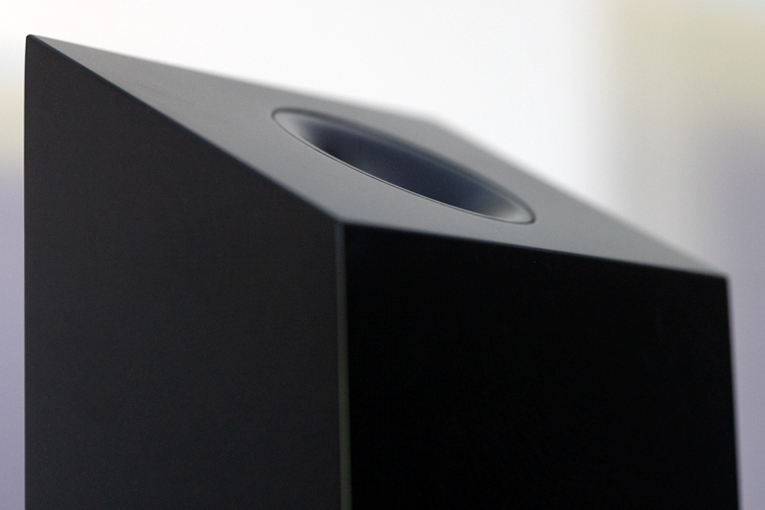
The 302 and 301 use the same TNF tweeter, which has a 1″ inverted dome (it’s concave, as opposed to the usual convex shape) made from an aluminum-magnesium alloy. They also use the same 4″ midrange-woofer, which has a cone fabricated using flax fiber. But the 302 has two of them on each side of the tweeter, while the 301 has just one on each side.
The drivers in the two models are also configured a little differently. In the 301, the tweeter and the pair of midrange-woofers hand off to each other at 2500Hz, so it’s a two-way design, with both of the midrange-woofers handling the same frequency range. With the 302, it’s a 2.5-way design; the two midrange-woofers placed furthest from the tweeter work from the bass region up to about 1100Hz, while the two closest to the tweeter also cover the bass region, but then continue up to 2500Hz, where they hand off to the tweeter. A magnetically attached grille is supplied with each speaker for driver protection. With the grille left on, the speaker is less obvious alongside a TV, but, as with most speakers, the sound is better with it off. It’s easily removed and replaced.
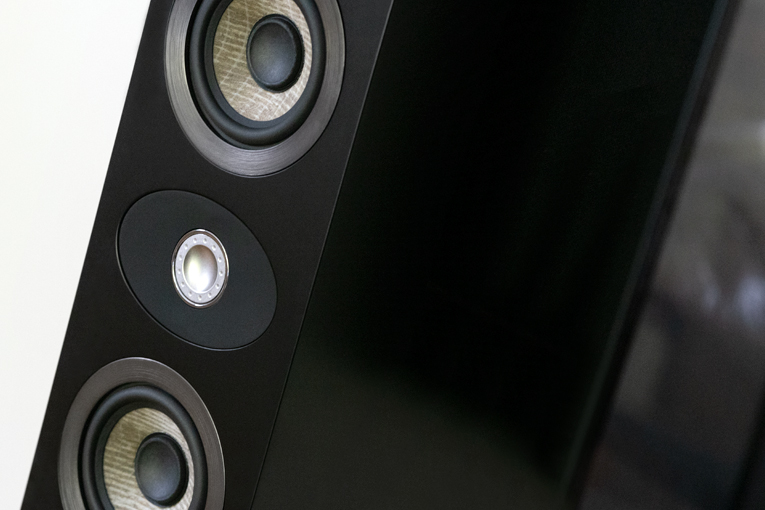
Because the 302 has a larger cabinet and four midrange-woofers for the bass, it can deliver deeper bass and more output than the 301—the 302 is rated down to 40Hz compared to 44Hz for the 301 (both -6dB). The 302’s sensitivity rating of 91dB is also 4dB higher than the 301’s 87dB (both 2.83V/m). That’s not insignificant, because each 3dB increase in output from a loudspeaker requires a doubling of amplifier power. So, if those sensitivity ratings are true, the 302 can play to the same volume level as the 301 with less than half the power. But they both are said to have a nominal 8-ohm impedance, with a 5-ohm minimum for the 302 and a 5.5-ohm minimum for the 301, so neither is too challenging a load for any amplifier.
As the series name implies, you can mount either speaker on the wall. However, you can also get a sturdy, all-metal antenna-like stand, available in black or white, that sells for $499 per pair (it’s only sold in pairs). While I’d wall-mount the speakers if I owned them, I used the stands for the review because that was the easiest way to set them up.
Mostly movies about music
I began my evaluation of the 302s in a system I’ve never written about before—the one in my family room, where I have a 65″ LG flat-screen TV to display video and a pair of discontinued Axiom Audio M22 wall-mounted loudspeakers for sound. This room measures about 21′ long by 13′ wide, with an 8′ ceiling. The screen and speakers are on one of the long walls; the sofa we watch from is about 9′ away from the screen. Take note, this is a stereo setup with just two speakers, not a 5.1, 7.1, or some such surround system. But if the speakers provide high-end sound quality, a stereo setup is sufficient for me and my family—surround effects don’t thrill us. There’s no sub in this system either, because we haven’t felt the need for one.
Since I wasn’t mounting the 302s on the wall, I set out assembling the stands, which went together easily, though there was one problem that took me a bit of time to address. Once the speaker is affixed to the stand—you first press it against the stand and then push it down so these flat metal “hooks” on the stand grab some metal pieces that are on the back of the speaker—the only way to get speaker wires to the binding posts is through the stand’s pole. But the only way to get cables into the pole is through a small hole—much too small—that’s predrilled in the bottom of the pole. Unfortunately, none of my spade-terminated speaker cables would fit through that hole. I could’ve threaded cables with banana plugs through, one at a time, but I didn’t have any. So I had to resort to some generic speaker wires with bare-wire ends that I have on hand for such an occasion. That worked, but if I could implore the Focal company to do one thing, it would be to make that hole in the pole much bigger.
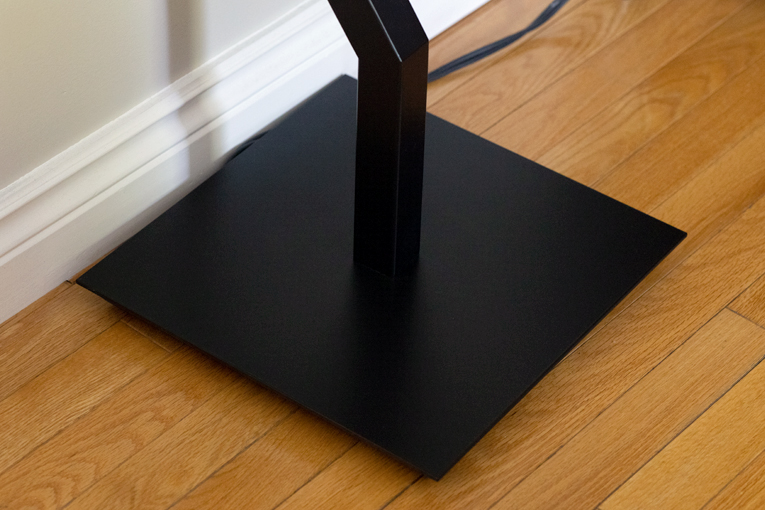
Once I had the speakers wired up and placed about a foot to each side of the screen and as close to the wall behind as I could get them, I turned on the Emotiva BasX TA1 stereo receiver that I’m currently using in this system and picked a random show on Netflix to play to make sure sound was coming out. It was. I could also tell that despite the TA1 being rated for just 60Wpc into 8 ohms, it would provide more than enough power for the 302s in my room—I cranked up the volume and there was no distortion from the speakers.
That evening, I grabbed my 16-year-old son and told him we were going to have a “music-education night.” Then I proceeded to stream Long Time Running, the fabulous 2017 documentary about the Tragically Hip’s final concert tour as frontman Gord Downie battled terminal brain cancer. The concert visuals and sound—particularly Downie’s voice—were both captured very well, and I almost jumped out of my seat when “Blow at High Dough” played through the Focal speakers. That had been filmed in Victoria, BC, where the band was playing its first show of the tour (it’s at about the 23-minute mark). Gord Downie’s vocals sounded startlingly clear, and the speakers didn’t compress at the point in the song when the entire band kicks in. I also noticed what I consider a Focal hallmark—a slightly tipped-up treble that added a little more life to the sound, but didn’t make it too bright.
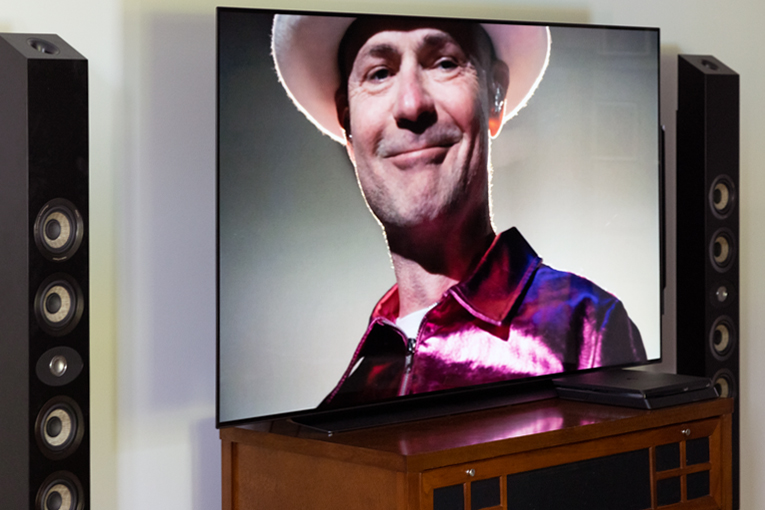
As other songs played during the documentary, I could tell that the speakers weren’t putting out much bass below 50Hz, so bassheads would likely want to use a subwoofer to flesh out the bottom two octaves of the audioband if they went with these speakers. But I’m not a basshead (obviously, because I don’t have a sub in this system), and the bass output was sufficient for me—it was powerful sounding, as well as deep enough for my tastes.
The next night I watched another great documentary, The Apollo, which is about the legendary Apollo Theater in New York City. Once again, the same sonic themes emerged—great clarity in the midrange, spirited highs but not too bright, and decent-enough bass. The sound of this documentary in the music sequences didn’t impress me the way Long Time Running had, but I could tell that it wasn’t the speakers or the amplifier holding anything back in terms of the sound quality I was hearing—they were simply delivering the sound fed to them.
Another music documentary I really enjoyed through the 302s was McCartney 3, 2, 1, which features discussions between Paul McCartney and super-producer Rick Rubin. It’s six episodes long, with each episode running around 30 minutes. Here the sound quality was very good, as you’d expect given Rubin’s involvement, and the voices had such presence and clarity that it sounded as if McCartney and Rubin were right there in my family room.
I watched other music-based docs, but I’ll just mention one more: Sound City, which didn’t make me a Foo Fighters fan, but did make me a fan of David Grohl. The band’s founder produced and directed this documentary, and I enjoyed it so much that I bought the book he wrote during the pandemic, The Storyteller: Tales of Life and Music, right after I watched Sound City. It’s terrific, too. If Grohl is as unassuming and down-to-earth as he seems in his movie and book, he might go down as the coolest rock musician who ever lived.
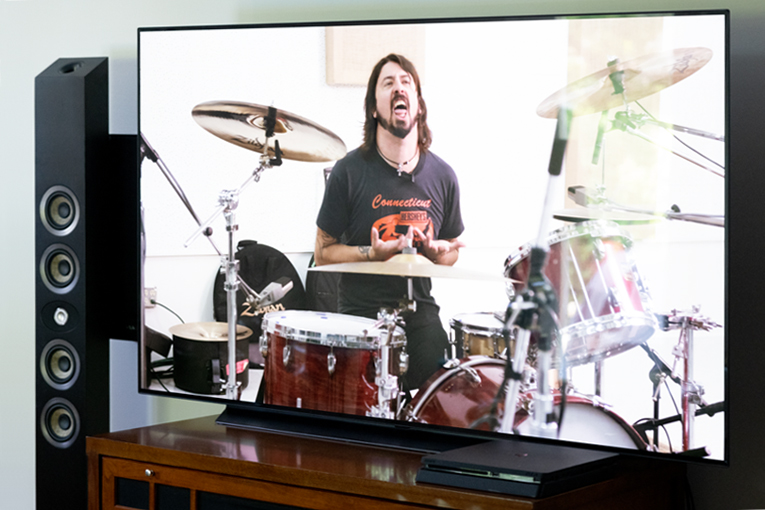
I watched Sound City with my 16-year-old again, but this time with the volume cranked even higher than for Long Time Running. Grohl’s a rocker and the material demands more volume. Even though the little TA1 is only capable of delivering a modest amount of power, the 302s made our ears ring from time to time, but the sound remained clean and free from distortion. My Axioms, on the other hand—which, to be fair, are smaller and only have two 5.25″ midrange-woofers per speaker—get a little coarse when playing music or dialog as loud as we did with Sound City. They also can’t produce bass as deep as the 302s could in my room.
Movies about music were mostly what I used to evaluate the 302s in this setup, but of course I played other stuff through them as well. One night I grabbed my teenager again and said: “You’re going to find out why Point Break isn’t a movie, it’s an experience.” I’m talking about Kathryn Bigelow’s 1991 version with Patrick Swayze and Keanu Reeves, not the 2015 piece-of-shit remake that everyone should avoid. Hearing the forceful crashing of the waves during the many surfing scenes was exhilarating. Here a subwoofer would’ve added more weight and made the surf sounds more impactful—but again, the 302s on their own were still good enough for my taste. What’s more, I could listen to the crash of those waves loudly without the 302s breaking up. The 302 might be a slim design with smallish drivers, but it’s no delicate flower—and the pair of French speakers definitely enhanced my viewing pleasure.
Music without movies
Next, I moved the 302s, still on their stands and with the generic speaker wires attached, into my living room—where the components featured in this column normally get reviewed. I used a NAD C 399 integrated amplifier to drive them. It’s much more powerful than the TA1—180Wpc into 8 ohms—but I left the built-in Dirac Live room correction off so I could hear the true sound of the speakers.
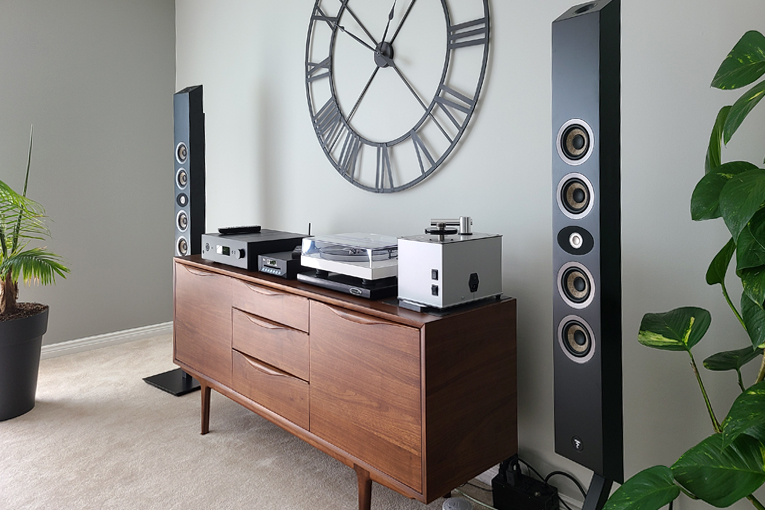
Setting the 302s up in this room might seem odd, because these speakers are intended to be partnered with a TV screen and this setup doesn’t have one—it’s a music-only stereo system. But if you look at the picture above, it’s not hard to imagine a screen plunked down on the console that’s holding the rest of the components, which would make the 302s seem right at home. Furthermore, I couldn’t help but notice how good they looked in the room. So good, in fact, that my wife asked, “Are they staying there? I like them.” So some people might buy them just for their living-room system, because they are quite elegant, as well as unobtrusive.
The one thing I will say was odd about this setup is that I had the speakers about 15″ from the wall behind, which put them at a disadvantage. On-wall speakers use the wall they’re affixed to for bass reinforcement, so the 302s weren’t getting all the bass help they needed. But, on their stands, they looked so strange if I put them closer to the wall in this room—I just couldn’t bring myself to do it.
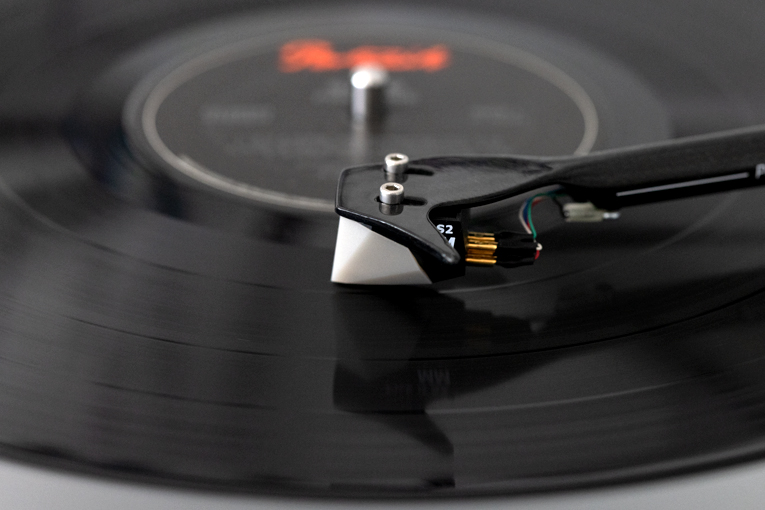
I first cued up Sade’s Promise (LP, Portrait FR 40263) and let side 1 play out. Right off the bat, I could tell that the bass wasn’t as deep as I’ve heard from some of the larger speakers I’ve had in this room. There wasn’t much below about 50Hz again, but the 302s were reproducing bass that was visceral, detailed, and perfectly balanced in the room, meaning no funky room modes were getting excited. A good example is “The Sweetest Taboo,” which opens up with some powerful drum sounds. They were impactful and clean through the Focals, without any bloat or overhang resonating in the room. But what really took me aback was how clean and smooth lead-singer Sade Adu’s voice sounded. I’ve had plenty of sub-$1500 speaker pairs in this room that could deliver the same bass extension as the 302s, but none that produced Adu’s vocals with such clarity.
Keen-eyed readers might notice a Cyrus Audio CDi-XR CD player on the console in the pictures—Roger Kanno sent it to me for photography after he finished listening to it for his review, which was published on this site last month, so I set it up just to try it out in this system. I slid the CD of Tracy Chapman’s self-titled debut (Elektra Records 9 60774-2) into the tray. Even though this release is now 34 years old, it still makes for great demo material. Track 1, “Talkin’ bout a Revolution,” told me pretty much all there was to know about the 302s in this room—taut bass down to about 50Hz; a slightly prominent midrange and treble, but not too prominent so as to sound forward or bright; great clarity throughout the audioband, but particularly so in the midrange, where, combined with a touch of midrange boost, Chapman’s vocals “popped”; and, something I haven’t talked about yet, the ability to project sound freely in the room without any kind of boxy colorations.
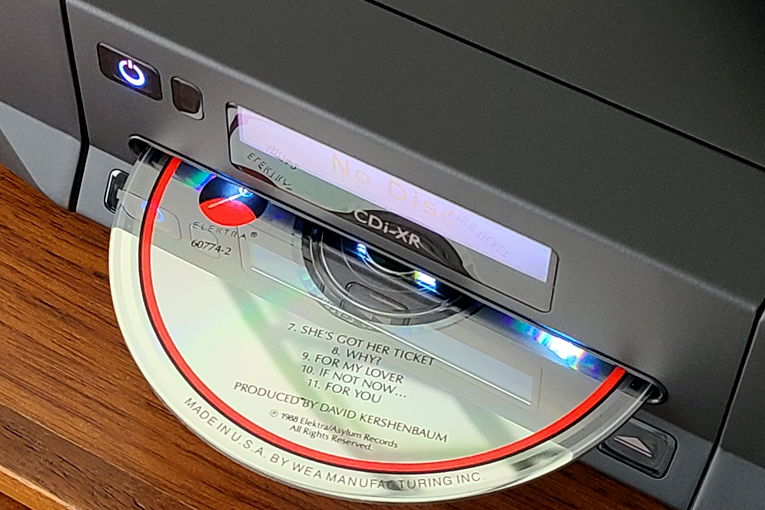
Even though that track told me a lot, I let the album play out because it was sounding so good. The highlight was track 4, “Behind the Wall,” which Chapman sings a cappella. Not only did her voice sound exceptionally clean and smooth, like Adu’s had, there were musical details surrounding her voice—such as room ambience—that I didn’t remember hearing so clearly before.
Although I played other music through the 302s, there’s nothing more to add to the story than what I have described already, except this—when I played the 2012 CD remaster of Blue Rodeo’s “5 Days in May,” from Five Days in July (WEA 2-580736), I made a point of moving out of the sweet spot (i.e., between and in front of the two speakers with my ears at tweeter level) by standing up, sitting very low, and moving around the room. I did this because with almost all speakers I’ve listened to that have a tweeter mounted between two drivers that are reproducing the same frequency, I’ve heard an obvious change in sound as I leave the sweet spot. Sometimes the change can be so drastic that the speaker’s sound goes from good to terrible. In fact, the reasons for such changes in sound character often show up in measurements, where you’ll often see odd frequency suckouts as you move the measurement microphone from on-axis with the tweeter to somewhere else.
With this track and others I played, the sound character didn’t change drastically as I moved around. The 302s did sound their best with my head in the sweet spot, but there were no sudden sonic discontinuities as I moved higher, lower, or around the room. That really surprised me—scratch that, shocked me—because it hasn’t been that way with other speakers with the same driver arrangement. I don’t know how the Focal designers achieved this trick when so many other speakers fail spectacularly at projecting sound in a consistent manner throughout the room with a tweeter in that position—but you can chalk that up as one more thing I like about the On Wall 302.
Conclusion
Focal’s On Wall 302 displays some exceptional sonic qualities—these include a super-clear midrange, clean and spirited highs, reasonable bass extension with excellent impact and detail, the ability to project sound freely from its enclosure, and a consistent tonal balance outside of the sweet spot. This speaker ticks a lot of boxes.
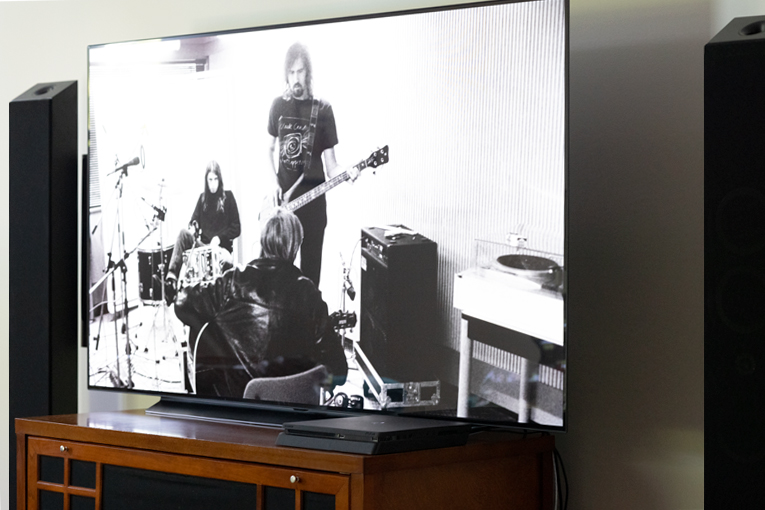
Here’s the thing, though: it’s probably not the best speaker to buy for someone who doesn’t care how a speaker looks and/or doesn’t mind taking up a bit of real estate on the floor. For less than $3000, you can get a pair of floorstanding speakers that offer deeper bass and, perhaps, even higher output (though the latter isn’t guaranteed, since the 302 plays pretty darn loud). They might even have other sonic qualities you like. Focal’s own Chora 806 floorstander, which costs $600 less per pair, is probably the better choice in a stereo music system for that type of listener. And there are a number of good choices from other manufacturers, too. But for someone who wants good sound quality for both movies and music combined with an unobtrusive, elegant appearance and the discreetness that wall mounting provides, a pair of Focal’s On Wall 302s wouldn’t be a good choice—it would be a great choice.
. . . Doug Schneider
das@soundstagenetwork.com






















